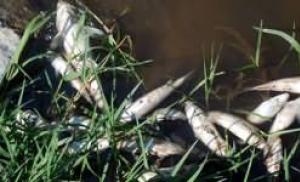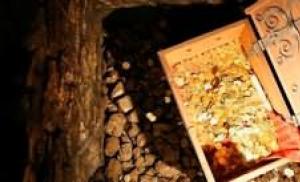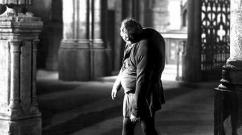Satanic mushroom: what is “devilish” about it? Satanic mushroom - description of where it grows, the toxicity of the mushroom.
Boletus satanas (false porcini mushroom, “forest devil” or boletus) - satanic mushroom, belonging to the boletus genus from the Boletaceae family. Moreover, each name corresponds to reality and is justified as general view mushroom and its color. The representative of the flora received the name “satanic” for its natural ability to mimicry, imitation and skillful camouflage as its edible relatives, unlike which it is poisonous. Although at one time the mushroom was considered conditionally poisonous, its collection and consumption should be treated with great caution.
The false satanic mushroom is simultaneously similar to several types of edible mushrooms, but is completely unsuitable for consumption.
It’s even better to neglect such a “treasure”, collect and cook truly edible mushrooms without harming your health.
The false porcini mushroom belongs to the order of fleshy ones, its fruiting body is quite large, it is considered a cap mushroom from the order of tinder fungi. In some cases (with favorable climatic and weather conditions) can grow to gigantic sizes - about 40 cm in diameter of the cap.
External characteristics of the satanic mushroom
Let's look at the description of this special organism. Like any other representative of the flora, the satanic mushroom has a fairly characteristic appearance and can be systematized and described according to individual characteristics:

- Hat. This is one of its most massive parts, the diameter of which can in some cases exceed 20 cm, with dull and dull coloring, roughness and damage, and a pillow-shaped shape. The skin of the cap is dense and even velvety to the touch. The most common cap colors are dull grey, olive, beige or cream.
- The tubular layer is large-porous and already more saturated in color scheme part of the boletus, although this layer is not particularly thick (from 1.5 to 2 mm). The color of the pores themselves is often varied (from yellow to red); shades with a certain greenish background are possible.
- The spore powder of this representative of the flora is olive-brown, and the spores themselves are small.
- Massive leg. The size of the leg can vary greatly, but on average it is about 15-17 cm long, within 10 cm wide in thickness, oval or even spherical in shape, with a specific narrowing at the junction with the cap. The color of the leg can often be very rich (red, beetroot and orange-purple shades), with a grid pattern, sometimes more or less clearly defined.
- The flesh is broken. The inside is painted in softer tones (yellow, cream or beige, with rare pinkish deviations), and the structure of the pulp itself is more watery and damp to the touch.
In darkened areas, these representatives of the flora are always darker and duller in shades, but the more sun that reaches them and breaks through, the brighter and more saturated the palette of colors will be, the more characteristic they appear features such a pain.
Return to contents
Distinctive features of false porcini mushroom
Due to its appearance, it can be confused with a porcini mushroom or a pink-golden boletus.

Satanic mushroom has a sharp, unpleasant odor reminiscent of rotten onions.
It looks like an edible representative of the flora, but is found in nature much less frequently than the mushrooms it looks so much like.
When interacting with the surrounding oxygen environment, the inner pulp or damaged outer shell of the mushroom acquires a specific bluish tint. This occurs due to the fact that the poison, accumulated in a dense mass, reacts with oxygen and during this interaction changes color. On a cut or at a place where fingers are compressed, a blue tint always appears first around the perimeter of the damage, and then a bright red color.
Another specific feature of the satanic mushroom can be considered the presence of a distinct, unpleasant and pungent odor, reminiscent of rotten onions. However, the younger the mushroom, the less pronounced its smell. Therefore, changing the color to bright colors when cutting or palpating is the most accurate method of determining toxicity. This method is good for direct collection, since the reaction of oxygen and toxic substances occurs within 3-5 minutes after exposure to the body of the fungus, and at home it is very difficult to distinguish a mushroom from an edible one.
More distinguishing feature- this is the density of the inner pulp of the mushroom, which is more watery compared to white. You can also distinguish mushrooms by the color of the stem: in false porcini mushroom it is often of bright colors (from bright red, red-orange to red-brown or beetroot).
This mushroom has high degree adaptability, mutation and mimicry, can imitate appearance many, both edible and conditionally edible mushrooms. But due to the fact that it is quite rare in nature, cases of poisoning by such mushrooms are rare, and the characteristics of the fruiting bodies of boletes make it quite easy to distinguish them from edible and more common mushrooms.
Return to contents
The area of growth and distribution of the satanic mushroom

The pulp of the satanic mushroom is damp to the touch and has a bluish tint.
The satanic mushroom prefers soils rich in limestone and carbonate, and therefore grows in forests or areas with such soils.
The growth period begins at the end of June and ends in the middle or end of September - this is due to the bolet's love for warmth.
Therefore, you can find it more often in the south and in the southern regions of Asia, Europe or the Middle East. If the summer is warm and humid enough, the mushroom can expand its growth perimeter to the forests of the Baltic states and Belarus.
The habitat is located near hazel or oak, but the mushroom can also be found in hornbeam groves or adjacent to linden trees, both under old trees and in thickets of young growth. It usually grows in small family groups and is considered quite rare species mushrooms
Introduction
Special literature claims that the satanic mushroom is poisonous. However this condition is very relative. The thing is that it becomes edible only after prolonged soaking and cooking for 10 hours. These culinary procedures make the organoleptic properties of the mushroom pulp completely inedible. Therefore, many mushroom pickers neglect them when preparing dishes, which can lead to serious damage to the spleen, liver, nervous system, since the flesh of the satanic mushroom is truly poisonous. Read the continuation of the article interesting information associated with this miracle of nature.
Satanic mushroom. Description
As we can see in the photograph, its appearance is not much different from the appearance of the most common pink boletus. Yet the striking similarity that distinguishes the Satanic mushroom is very deceptive. For example, boletus does not contain any substances hazardous to human health. toxic substances, while the tubular formations of the satanic mushroom have been early period developmental process actively accumulate and produce muscarinic type poisons. In order to notice the characteristic symptoms of poisoning resulting from the consumption of this mushroom, it is enough to eat only 50 grams of the ill-fated representative of the forest thicket.

According to its biological structure, the satanic mushroom belongs to the group of boletus mushrooms. It can be found in the southern regions of our country. It usually grows in oak groves or ravine thickets. You are much less likely to find a satanic mushroom next to linden or hornbeam trees. As it grows, it can reach very impressive sizes. There are specimens in which the diameter of the cap grows to 40 cm. Judging by the description of this mushroom, the cap is early age It has a cushion-like structure, with a smooth outer surface covered with a dense skin. On the inside of the cap there is a dense, spongy substance of a light pink hue. If you touch it, the surface of the satanic mushroom is velvety. The top of the mushroom is green, olive or brown in color.

Yellowish shades with an olive tint can be common in dark areas where light levels are very low. Usually it is under old oak and linden groves with dense growth of young growth. The stem of this mushroom is similar to the stem of a boletus, however, if you make an incision, you can see how the color appears first blue, and then bright red. This is the interaction of oxygen from the surrounding air with the poison.
How to distinguish
It can be distinguished by its unpleasant smell, often reminiscent of rotten onions. Although in at a young age such a clear sign may be completely absent. So be careful about the cut of the leg. If it turns blue in a few minutes, it is necessary to urgently get rid of this fungus. At home you are unlikely to be able to determine this.
It's generally edible
They say that if the satanic mushroom undergoes proper heat treatment, it will be quite edible, however, we strongly advise you not to put your health at risk.
The satanic mushroom (satanic bolete) belongs to the boletus genus. It really is very similar to the rose-golden boletus. But unlike the latter, it is a poisonous mushroom. Most often it grows on calcareous soil, in close proximity to oak, hornbeam, hazel, linden in southern parts Europe, Asia, Middle East.
The satanic tinder fungus reaches a large size at the end of summer, the cap of which by that time can reach 30 cm. It is round and cushion-shaped in shape. Mature representatives have a more prostrate shape. The skin on the cap is velvety, sometimes smooth to the touch, and dry. Color varies from white to dirty gray and olive. There are specimens with a yellowish, greenish tint. The stem of the satanic mushroom is massive, reaches 15 cm in height and up to 10 cm in thickness. Young mushrooms stand on a spherical stalk, which changes to a barrel-shaped or turnip-shaped stalk as they grow. Mature mushrooms have a dense stem with a carmine-red mesh pattern in the middle. It is somewhat narrowed at the top, yellowish-red in color. The flesh turns a little blue when cut, sometimes turns red. Old, overripe mushrooms have an unpleasant smell of rotting onions or carrion. Young mushrooms do not have a pronounced odor.
In its raw form, the satanic mushroom, described above, is very poisonous. However, in some European countries they treat it as conditionally edible. It has been proven that the high toxicity of the mushroom persists even after prolonged cooking. Therefore, even an experienced mushroom picker should remember that the satanic mushroom is poisonous mushroom!
The satanic mushroom is similar to the beautiful boletus, distinguished by yellow tubes. Some similarities are also observed with bitter bolet, with the exception of a lighter cap and yellow tubes. The purple boletus is similar to the satanic boletus, but in cross-section it has a dark blue color. Similarities are observed with other representatives of the boletaceae: false satanic mushroom, yellow boletus, devil's mushroom, olive-brown oakberry, speckled oakberry.
Photo of a mushroom
The satanic mushroom (photo) loves open sunny places. Ripening begins in June and continues until September. The mushroom is rare and has not been studied enough. However, it is reliably known that even 1 gr. mushroom causes severe poisoning.
The satanic mushroom has many opinions about its poisonousness or edibility. But it is important to understand the risk you are taking. If you doubt its edibility, then do not take it or eat it.
Some Europeans even prepare it by soaking it for 10 hours. It is possible to distinguish edible mushroom from poisonous.
The edible one has white flesh inside in any case. In a poisonous one, when cut, the inside changes from red to blue.
In case of poisoning, you must immediately call an ambulance and provide first aid by inducing vomiting to clear the stomach.
When collecting mushrooms on forest edges, you can confuse such types of mushrooms as boletus mushroom and satanic mushroom; it is quite difficult to distinguish them, but it is possible. Read more in the article.
Description
Boletov family, Borovik clan. Otherwise they can call it Satanic Boletus, Devil's Mushroom, Satan.
The mushroom is conditionally edible. There are a lot of opinions about its suitability and possibility of consumption.
The main criterion for this mushroom is proper processing and preparation (and this means cooking - 10 hours), otherwise it is inedible.
The appearance of the mushroom is:
- Sometimes flat, sometimes convex hat 10-20 cm, the color is sometimes gray, sometimes green, sometimes something in between;
- The mushroom is smooth to the touch; when the weather is humid, you can feel the mucus;
- The color of the spores changes to brown;
- Large leg the color of a radish;
- White flesh - if damaged (cut), it will change color from red and turn blue.
IT IS IMPORTANT TO KNOW: The decisive factor in distinguishing it from other mushrooms cannot be blueing, since this occurs in many types of mushrooms.
You can distinguish the mushroom from others by the sharp, stinking smell of onions that have rotted.
Fruits in July-September.
Why is it called that?
It is called that because of the opinion about its insidiousness and poisonousness, it just so happens.
Some people are frightened by the color of the mushroom - from yellow to red-pink, reminiscent of the color of the flames of hell. By the way, this is the main feature that distinguishes a poisonous mushroom from an edible one – color.
Edible or poisonous?
Still, there are many opinions about its toxicity or edibility and it is extremely dangerous for you to risk consuming it.
Raw unprocessed mushroom
It has a bunch of toxins and is super poisonous, but it is not surprising that nowadays people manage to cook it and eat it at their own peril and risk. They soak it for 10 hours and try to cook it. But this does not guarantee that you will not feel sick and heavy after eating it.
How to distinguish?
When you cut a poisonous mushroom, the inside changes color from red to blue, but the edible one is always white inside.
Where does it grow?
Place of growth - different forests(coniferous, deciduous).
The Middle East, the Caucasus, the southern regions of Russia and Europe are all places where the satanic mushroom grows.
It can be found under oak, linden, and chestnut trees.
Poisoning. First aid
Scientific experts believe that consuming one gram of the mushroom worsens the condition, while ten grams leads to death.
As soon as various pains begin to be felt, you urgently need to call an ambulance or go to the hospital.
The consequences may be:
- Severe cutting pain in the abdomen;
- Dizziness;
- Nausea;
- Diarrhea;
- Vomit;
- Hallucinations;
- Sharp goal. pain.
While you are waiting for help, try to give yourself first aid:
- Induce vomiting;
- Drink warm soda water.
The main rule: if you’re not sure what kind of mushroom it is, don’t pick it up and don’t eat it. It's better to take care of yourself and be safe.
The Satanic mushroom is a poisonous representative of the Borovik genus, Boletaceae family. Often this dangerous mushroom confused with white mushroom, and such consequences can be very serious; it is not for nothing that people call this mushroom “forest devil.”
The Latin name of the mushroom is Boletus satanas.
These mushrooms are very similar in appearance to pink boletus mushrooms. But in the tubular elements of these poisonous mushrooms muscarinic type toxins are deposited. According to their structure, these mushrooms belong to the boletus group. Over time they grow to large sizes. The diameter of the caps of individual specimens can reach up to 40 centimeters. The cap is cushion-shaped with a smooth surface and dense skin.
WITH inside The caps contain a dense, spongy substance to the touch. The color of the upper part of the cap is brown, green or olive. The cap and stem feel velvety to the touch. If satanic mushrooms grow in darkened forests, then their caps become more prostrate, and the color becomes yellow with an olive tint.
The stem of the satanic mushroom is also similar in appearance to those of the boletus family. The base of the mushroom is massive, and at the junction with the cap it becomes thinner. The usual height of the mushroom is 20 centimeters, with a diameter of up to 12 centimeters.
Places where satanic mushrooms grow
These mushrooms grow in coniferous, mixed and deciduous forests. They are mainly found in the southern regions. They prefer soil with excess lime.
The fruiting period of satanic mushrooms lasts from July to September. They grow up in small families. They form mycorrhiza with linden, chestnut, hornbeam, beech and hazel. They are found in the Caucasus, the Middle East in the southern part of our country, the Primorsky Territory, and also in southern Europe.

How to recognize a satanic mushroom?
If the stem of a satanic mushroom is cut, a blue color will appear first, and then a bright red color. By this characteristic you can recognize this poisonous mushroom. In addition, the pulp of the satanic mushroom has the smell of rotten onions. Young specimens may have no smell at all.
If you cut the stem and it turns blue within 3-5 minutes, then this mushroom should be thrown away immediately, since the color of the flesh of edible mushrooms does not change when cut.
Is it possible to eat satanic mushrooms?
In the specialized literature, these mushrooms are classified as conditionally edible. However, satanic mushrooms cannot be used for food without prolonged soaking and cooking for less than 10 hours. If these conditions are neglected, the mushroom picker faces poisoning. Despite the fact that biologists classify satanic mushrooms as conditionally edible, experts do not recommend risking your health and collecting them, since the amount of poison cannot be determined at home.

Toxicity and signs of satanic mushroom poisoning
The pulp of these mushrooms is poisonous, and if they are not subjected to heat treatment, the body is poisoned. About 50 grams of mushrooms are enough for poisoning. IN in this case toxic damage to the nervous system, liver and spleen occurs. This condition is very serious.
When poisoned by satanic mushrooms, a person experiences vomiting and diarrhea, and the vomiting is very strong and constant. Paralysis of the limbs, loss of consciousness and severe headaches may occur. Death can occur due to suffocation and cardiac arrest.
In case of poisoning with satanic mushrooms, it is necessary to provide next help:
Rinse the stomach;
Call an ambulance.

Similar species
Satanic mushrooms are similar to other boletaceae with blue flesh and colored spores. Among the inedible representatives, the satanic mushroom can be confused with the following mushrooms:
The whitish boletus is not eaten because of its bitter taste;
Boletus is pink-golden;
Boletus inedible also has a bitter taste and is therefore inedible;
Boletus le Gal or legal boletus;
False satanic mushroom.
Also, the satanic mushroom can be confused with conditionally edible mushrooms:
The olive-brown oakberry has a brown cap, and its flesh quickly turns blue;
The speckled oakberry has a darker cap, there is no mesh on the stem, and the flesh also quickly turns blue.














